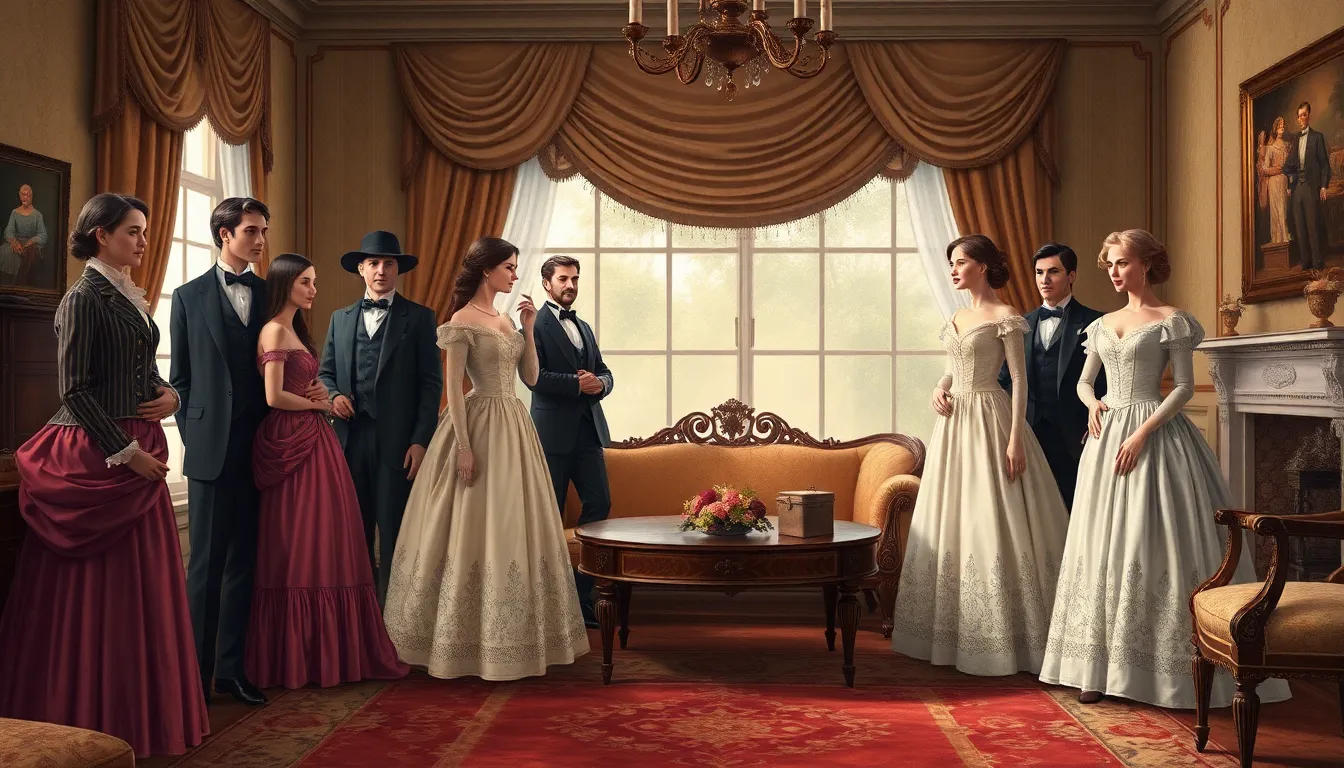Table of Contents
TogglePeriod dramas transport viewers to another time, where corsets are tighter than a drum and social etiquette could rival a game of chess. With lavish costumes and grand estates, these shows serve up a delightful blend of romance, intrigue, and a sprinkle of scandal. Who wouldn’t want to sip tea while navigating the complexities of Victorian society or dodging a duel in Regency England?
But it’s not just about the eye candy; period dramas delve into the human experience, exploring timeless themes that resonate even today. From unrequited love to the quest for independence, these stories remind us that while fashion may change, the heart’s desires remain constant. So grab your favorite blanket and prepare for a binge-worthy journey through time—where every episode is a ticket to a world where the past meets the present in the most entertaining way possible.
What Are Period Dramas?
Period dramas represent a genre of film and television that recreates past eras. These productions often showcase meticulous attention to detail in settings, costumes, and customs, offering viewers an immersive experience. Characters often navigate intricate social hierarchies, highlighting the complexity of human relationships throughout history.
Themes of love frequently emerge in these narratives, reflecting emotional struggles and triumphs. Audiences witness societal constraints faced by individuals, particularly women, driven by the desire for independence. Dramatic plots unfold against rich backdrops, whether set in the elegance of Victorian England or the turbulence of the French Revolution.
Distinct visual aesthetics characterize period dramas. Cinematography frequently captures the essence of the time periods depicted, enhancing engagement. Color palettes and set designs transport viewers into different worlds, providing a striking contrast to modern life.
Significant historical events often serve as backdrops for character-driven stories. These dramas encourage a deeper understanding of cultural contexts and the evolution of societal norms. Viewers appreciate how these programs reflect timeless human experiences despite their historical settings.
Creating connections between past and present, period dramas resonate with audiences on various levels. They not only entertain but also provoke thought about contemporary issues through the lens of history. Ultimately, period dramas blend storytelling with artistry, making them a captivating choice for viewers seeking both entertainment and insight.
Popular Period Dramas
Period dramas captivate audiences with rich storytelling and careful recreations of historical settings. These productions transport viewers to different eras, where societal norms and intricate traditions shape the narratives.
British Period Dramas
British period dramas showcase an array of compelling stories, often rooted in literary classics. “Pride and Prejudice,” adapted from Jane Austen’s novel, explores themes of love and class distinction. “Downton Abbey” captures the lives of an aristocratic family and their servants during the early 20th century, providing insight into social changes post-World War I. “The Crown” delves into the reign of Queen Elizabeth II, highlighting political dynamics and personal challenges faced by the monarchy. Viewers appreciate the meticulous attention to costume design and set decoration, which enhance the authentic atmosphere of each era.
American Period Dramas
American period dramas present diverse slices of history through compelling narratives. “The Help,” set in the 1960s, confronts racial tensions in the South, showcasing the lives of African American maids. “Deadwood” offers a gritty portrayal of life in a mining town during the late 19th century, blending fact with fiction. “The Gilded Age” explores wealth, class struggles, and societal shifts in 1880s New York City. Through vibrant characters and plotlines, these dramas provide a window into crucial moments that have shaped American culture.
Key Characteristics of Period Dramas
Period dramas feature distinct traits that enhance their unique storytelling. These characteristics contribute to their timeless appeal and immersive experiences.
Costume and Set Design
Costume design plays a crucial role in creating authenticity. Designers often research historical garments, ensuring accuracy in materials and styles. Set design complements this effort by reconstructing detailed interiors and exteriors reflective of the chosen era. Elements like furniture, decoration, and architecture establish a believable backdrop. Audiences can easily identify the time period through these visual cues. Iconic examples include the lavish wardrobes in “Downton Abbey” and authentic sets in “The Crown.” Together, costumes and sets transport viewers into another world.
Historical Accuracy
Historical accuracy remains essential for period dramas. Filmmakers strive to bring authentic narratives to life, relying on extensive research. They analyze primary sources and consult experts to depict significant events accurately. True-to-life character portrayals and dialogue reflect the culture of the time. Attention to detail enhances the overall authenticity, allowing viewers to connect with the era. Series like “The Gilded Age” candidly address issues such as class struggles and social dynamics, providing an insightful perspective on the past. Consequently, this commitment to accuracy enriches the viewing experience, fostering a deeper appreciation for history.
Impact of Period Dramas on Culture
Period dramas influence culture by shaping perceptions of historical events and social dynamics. They stimulate interest in past eras, encouraging audiences to explore history beyond the screen. Viewers often gain insights into customs, traditions, and societal structures, enhancing cultural literacy.
These dramas contribute to discussions about contemporary issues, reflecting themes like class, gender, and race. For instance, shows like “Downton Abbey” highlight class distinctions while portraying social change. Simultaneously, American period dramas like “The Help” confront racial tensions, prompting conversations about equality and justice.
The aesthetic appeal of period dramas captivates audiences through lavish costumes and set designs. Authentic looks transport viewers into different times, fostering a connection with historical contexts. Such visuals not only attract attention but also engage emotions and provoke thought about past and present similarities.
Crafted narratives allow audience members to empathize with characters facing societal constraints. Women, in particular, often navigate these challenges, representing struggles for independence and identity. Story arcs resonate with modern audiences, making historical narratives relevant to current experiences.
Period dramas also inspire a resurgence in fashion and design trends. Designers frequently draw inspiration from these series, reviving historical garments and styles. Such influences permeate mainstream fashion, showcasing the lasting impact of these historical portrayals.
Ultimately, the cultural resonance of period dramas extends beyond entertainment. They cultivate appreciation for history and diversity while inviting reflection on ongoing societal issues. Through compelling storytelling, these dramas serve as a bridge connecting the past to the present.
Period dramas offer a captivating glimpse into the past while addressing timeless themes that resonate with modern audiences. Their intricate storytelling and rich visual aesthetics not only entertain but also provoke thought about societal issues that remain relevant today. By immersing viewers in historical contexts, these dramas foster a deeper understanding of cultural evolution and human experiences.
As they continue to inspire discussions about class, gender, and race, period dramas serve as powerful reminders of the complexities of history. This genre’s ability to blend artistry with meaningful narratives ensures its enduring appeal, inviting viewers to reflect on both the past and the present.







